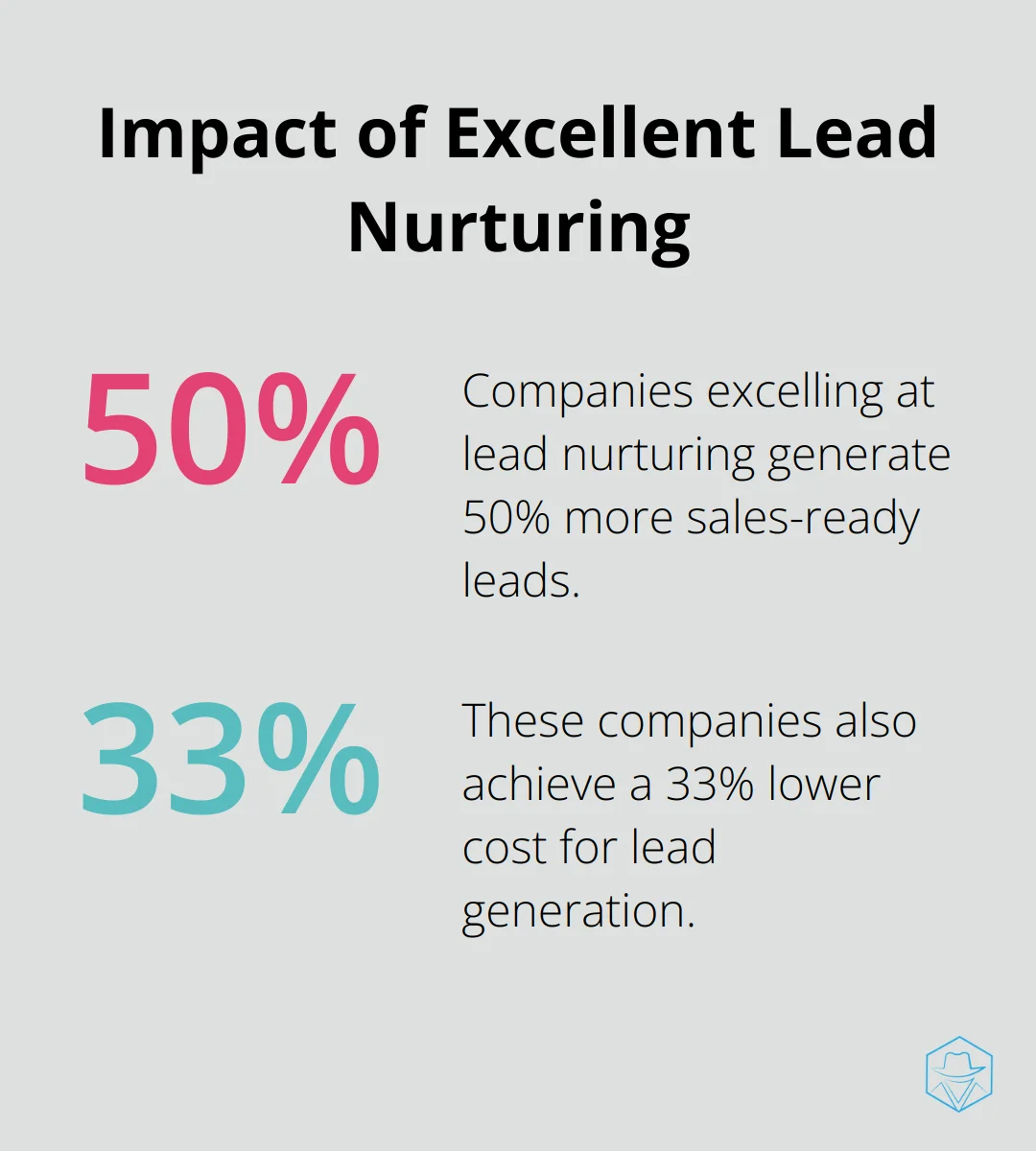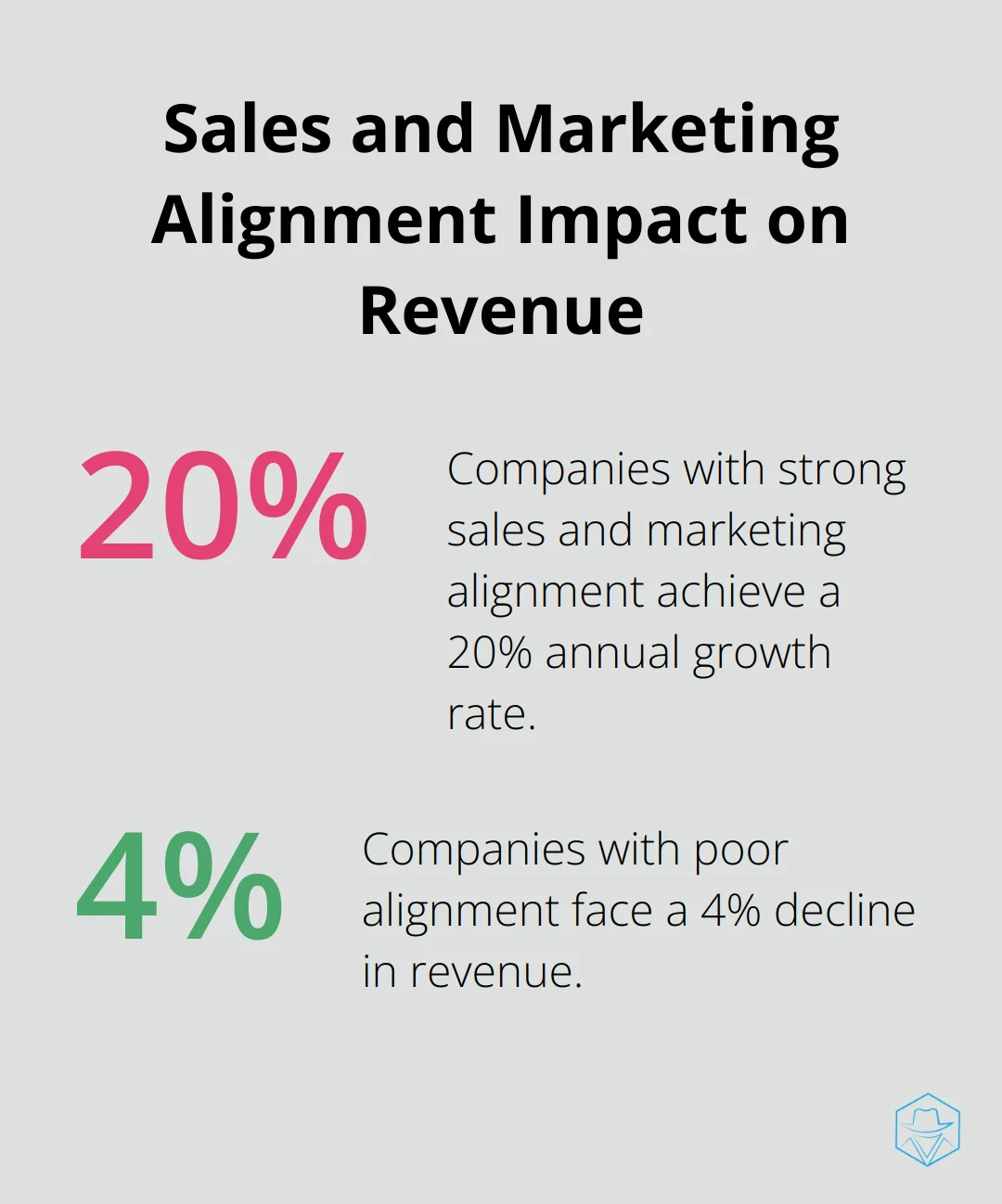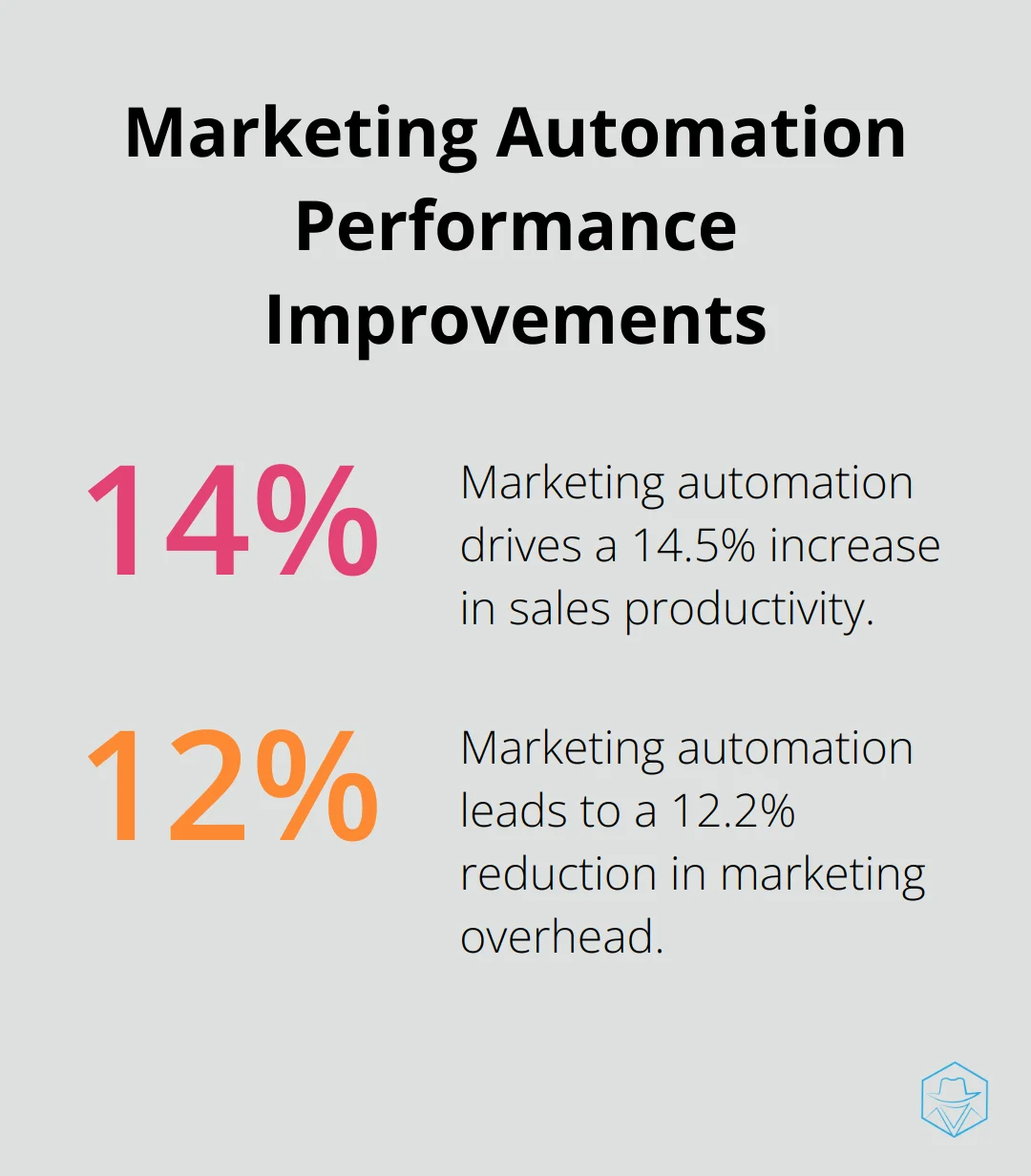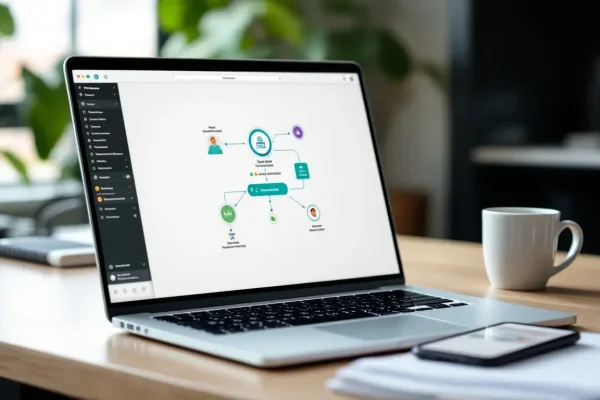Lead Generation with Marketing Automation

At Drop Cowboy, we’ve seen firsthand how marketing automation revolutionizes lead generation.
This powerful tool streamlines processes, personalizes customer interactions, and boosts conversion rates.
In this post, we’ll explore effective strategies for implementing marketing automation, including its application for Shopify stores.
We’ll also dive into measuring success and optimizing your automated lead generation efforts.
What Is Marketing Automation for Lead Generation?
Marketing automation for lead generation transforms the digital marketing landscape. It uses software to automate repetitive marketing tasks and workflows, which streamlines the process of identifying, nurturing, and converting potential customers into qualified leads.
Key Components of Marketing Automation
Effective marketing automation systems include several crucial elements:
- Email marketing tools: These allow for the creation and scheduling of targeted campaigns.
- Lead capture forms: These gather essential information from potential customers.
- Customer relationship management (CRM) integration: This ensures seamless data flow between marketing and sales teams.
A study by Forrester Research highlights that companies which excel at lead nurturing generate 50% more sales-ready leads at 33% lower cost. This statistic underscores the power of automation in generating leads efficiently.

How Automation Enhances Lead Generation
Marketing automation significantly improves lead generation efforts by enabling businesses to engage with prospects at scale. It allows for the creation of personalized customer journeys based on behavior and preferences. For example, when a potential customer downloads a whitepaper, an automated email sequence can provide related content and nurture the lead.
Tangible Benefits of Automation in Lead Generation
The benefits of using automation in lead generation processes are numerous and impactful:
- Time-saving: Marketers can focus on strategy and creativity while routine tasks run automatically.
- Improved lead quality: Scoring and segmenting leads based on their interactions allows sales teams to prioritize the most promising prospects.
- Consistent follow-up: A study by Marketing Sherpa found that 79% of marketing leads never convert into sales due to lack of lead nurturing. Automation ensures that no lead falls through the cracks.
Personalization at Scale
Automation enables businesses to deliver personalized experiences to a large audience. For instance, Drop Cowboy’s Mimic AI™ technology allows for personalized voice messages at scale. When integrated into an automated lead generation strategy, this feature can dramatically improve conversion rates.
As we move forward, we’ll explore effective strategies for implementing marketing automation, including its application for various business types and platforms.
Maximizing Lead Generation with Automation
Marketing automation has transformed lead generation, allowing businesses to capture and nurture prospects more efficiently than ever before. Let’s explore some powerful strategies to supercharge your lead generation through automation.
Personalized Email Campaigns
Email remains a cornerstone of effective lead generation. Automated email campaigns allow you to send targeted messages based on user behavior, preferences, and demographics. A study by Epsilon found that personalized emails drive 6 times higher transaction rates compared to generic messages.
To create effective personalized email campaigns:
- Segment your email list based on factors like industry, job title, or past interactions.
- Use dynamic content to customize email elements (subject lines, images, and offers).
- Set up triggered emails based on specific actions, such as website visits or content downloads.
Advanced Lead Scoring
Lead scoring is essential for identifying your most promising prospects. You can prioritize your sales efforts and improve conversion rates by assigning points based on demographics and behaviors.
Implement a robust lead scoring system by:
- Defining your ideal customer profile and aligning scoring criteria accordingly.
- Assigning point values to actions like email opens, website visits, and content engagement.
- Using negative scoring for behaviors that indicate disinterest or poor fit.
A study by Gartner found that companies using lead scoring see a 30% increase in deal closures and a 28% reduction in the sales cycle.
Multi-Channel Automation
Today’s buyers interact with brands across multiple channels. An effective automation strategy should encompass various touchpoints to create a cohesive customer experience.
Consider these multi-channel automation approaches:
- Use social media automation tools to schedule posts and engage with followers.
- Implement chatbots on your website to provide instant responses to visitor inquiries.
- Integrate SMS marketing with your email campaigns for higher engagement rates.
CRM Integration for Seamless Lead Management
Integrating your marketing automation tools with your CRM system is vital for maintaining a unified view of your leads and customers. This integration enables sales and marketing teams to work together more effectively, ensuring no leads fall through the cracks.
Key benefits of CRM integration include:
- Real-time syncing of lead data between marketing and sales platforms.
- Improved lead handoff processes between marketing and sales teams.
- More accurate reporting and forecasting based on comprehensive data.
A study by Aberdeen Group found that companies with strong sales and marketing alignment achieve a 20% annual growth rate, compared to a 4% decline in revenue for companies with poor alignment.

The next chapter will explore how to measure the success of your automated lead generation efforts and optimize your strategies for even better results.
How to Measure and Optimize Your Marketing Automation
Tracking the Right Metrics
Effective marketing automation requires a focus on the right key performance indicators (KPIs). Instead of vanity metrics, concentrate on metrics that directly impact your bottom line:
- Conversion Rate: This measures the percentage of leads that become customers. Companies with strong marketing automation see a 53% higher conversion rate than non-users (Invesp).
- Customer Acquisition Cost (CAC): This calculates how much you spend to acquire each new customer. Marketing automation should reduce this cost over time.
- Return on Investment (ROI): This measures the overall profitability of your marketing efforts. Marketing automation drives a 14.5% increase in sales productivity and a 12.2% reduction in marketing overhead (Nucleus Research).
- Lead Velocity Rate (LVR): This tracks the growth rate of qualified leads month-over-month. A consistently positive LVR indicates a healthy, scalable lead generation process.

The Power of A/B Testing
A/B testing optimizes your marketing automation. Systematically test different elements of your campaigns to identify what resonates best with your audience. Focus on:
- Email subject lines: Test different lengths, tones, and personalization techniques.
- Call-to-action buttons: Experiment with colors, text, and placement.
- Landing page layouts: Try different designs, copy, and form lengths.
A/B testing your email campaigns can increase click-through rates by up to 50% (HubSpot).
Mapping and Optimizing the Customer Journey
Understanding your customer’s journey optimizes marketing automation. Analyze touchpoints and interactions to identify areas for improvement and personalization.
Create a detailed map of your customer journey, including all potential touchpoints. Use tools like Google Analytics to track user behavior across your website and identify where leads might drop off.
Look for opportunities to enhance the experience through automation:
- Triggered emails based on specific actions or inactions
- Personalized content recommendations
- Retargeting campaigns for abandoned carts or incomplete forms
Leveraging Advanced Analytics Tools
Robust analytics tools optimize your marketing automation. While many marketing automation platforms offer built-in analytics, supplement these with specialized tools for deeper insights:
- Google Analytics: For website behavior and conversion tracking
- Hotjar: For heatmaps and user session recordings
- Mixpanel: For advanced user behavior analysis
These tools uncover hidden patterns and opportunities in your data, leading to more effective automation strategies.
Continuous Improvement
Marketing automation thrives on continuous improvement. Regularly review your metrics, test new approaches, and refine your customer journey. This iterative process ensures your automation strategy evolves with your business and customer needs.
Try to implement a regular review cycle (e.g., monthly or quarterly) to assess your automation performance and make data-driven adjustments. This proactive approach maximizes the effectiveness of your marketing automation efforts.
Final Thoughts
Marketing automation has transformed lead generation, allowing businesses to streamline processes and boost conversion rates. Companies can nurture leads more effectively, save time on repetitive tasks, and focus on strategic initiatives that drive growth. As technology advances, marketing automation will incorporate more AI and machine learning capabilities, enabling sophisticated personalization and real-time campaign optimization.
Drop Cowboy offers a powerful solution for businesses seeking to enhance their marketing automation efforts. Our features, such as Mimic AI™ for personalized voice messages, can significantly boost customer engagement and campaign effectiveness. Marketing automation for Shopify stores can be particularly impactful, creating targeted campaigns based on customer behavior and automating abandoned cart reminders.
Success in marketing automation requires continuous optimization. You should analyze your results, test new approaches, and refine your strategies based on data-driven insights. With the right tools and approach, marketing automation can transform your lead generation efforts and drive sustainable business growth.
blog-dropcowboy-com
Related posts

June 12, 2025
Optimizing Receivables Management for Business Success
Boost business success by optimizing receivables management and maximize cash flow with effective strategies and practical tips.

June 16, 2025
Effective Strategies for Managing Accounts Receivables
Enhance your management of accounts receivables with effective strategies to speed up collections and improve cash flow.

August 4, 2025
Why would a phone go straight to voicemail
Discover why a phone goes straight to voicemail and learn practical solutions to fix this common issue with real examples and insights.

April 22, 2025
Implementing Marketing Automation in Salesforce
Boost efficiency by implementing marketing automation in Salesforce. Learn tools, tips, and strategies to streamline your marketing campaigns today.

April 3, 2025
Automation in Content Marketing: Tips and Tricks
Boost efficiency with automation content marketing tips. Discover strategies, tools, and trends to streamline your efforts and enhance productivity.

April 5, 2025
Choosing the Right Marketing Automation Course
Find the best marketing automation course with practical tips for success. Boost your skills and stay ahead in the evolving digital landscape.